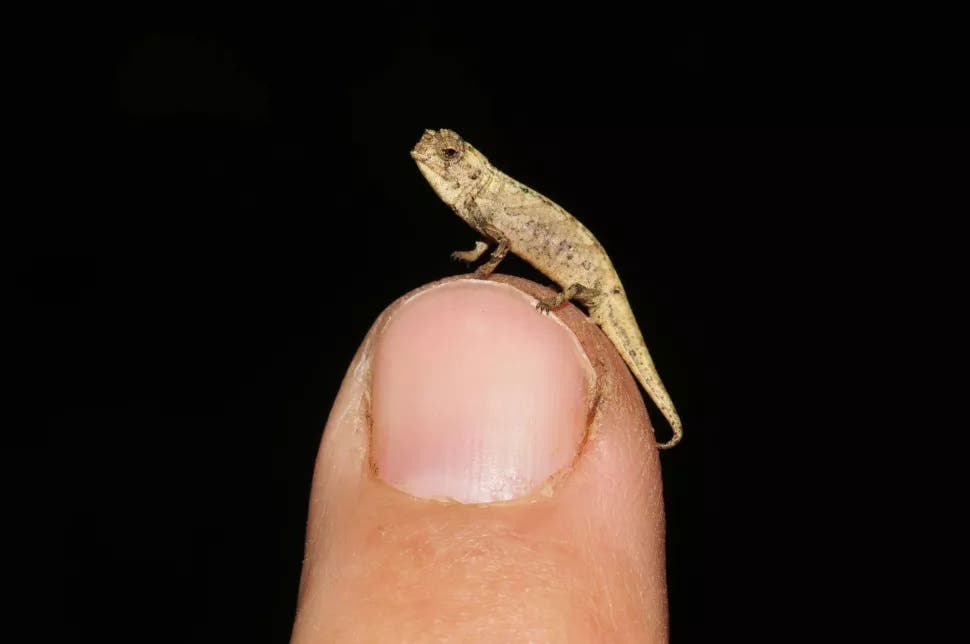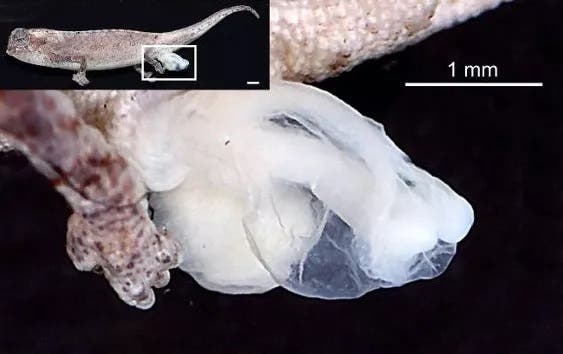
A tiny male chameleon from Madagascar has now been crowned the world’s smallest reptile. The wee creature measures only half an inch (13.5 millimeters) in length from the snout to its rear-end (not counting the tail), small enough for the chameleon to stay comfortably perched on a human fingertip, despite its disproportionately large genitals.
Evolution favors both the very big and the very small
The chameleon, known as Brookesia nana, was recently described by a team of researchers led by Frank Glaw, a German herpetologist working at the Zoologische Staatssammlung in München.
Glaw is no stranger to novel reptilians. In fact, he is one of the foremost authorities in Madagascarian fauna, having described over 200 species, several of which are named after him.
In 2012, Glaw described Brookesia micra, another tiny reptile native to the islet of Nosy Hara in Madagascar. Perhaps you remember a photo of it perched on the head of a match, which was widely circulated on social media. At the time, the 1.1-inch (29 millimeters) adorable-looking animal was deemed the smallest known chameleon — until now when B. micra made room for B. nana.

Writing in the journal Scientific Reports, Glaw and colleagues reported on an “extreme miniaturization of a new amniote vertebrate.” Miniaturization refers to the evolutionary reduction of adult body size. Miniaturized taxa are frequently characterized by a trend towards reduction and simplification of various structures and organs.
In this case,B. nana has been miniaturized compared to a regular-sized chameleon, which can be 50 times larger, almost close to the minimum possible body size. Meanwhile, the world’s largest reptile, the saltwater crocodile, can weigh up to two tons.
However, B. nana isn’t exactly a scaled-down version of a typical chameleon. One of its defining features is its oversized sexual organs, two tubular genitals measuring roughly 18.5% of the animal’s total body size.

Such is the case for the male, which is surprisingly smaller than the female, the latter measuring 0.7 inches in length (19.2 millimeters). But perhaps this oddly reversed sexual dimorphism will not stand the test of time. The elusive tiny chameleon was described based on only two specimens, a sample size that is woefully small to draw any firm conclusions. What’s more certain is that this species, although just barely discovered, may be threatened by extinction judging by its limited range and challenges in identifying new specimens.


